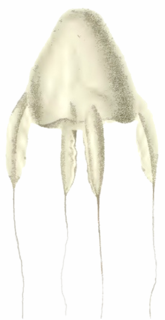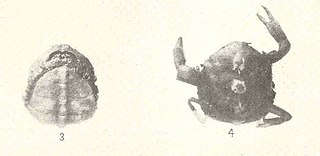
Charles Monroe "Sparky" Schulz was an American cartoonist and creator of the comic strip Peanuts. He is widely regarded as one of the most influential cartoonists of all time, cited by cartoonists including Jim Davis, Bill Watterson, Matt Groening, Dav Pilkey and Stephan Pastis.

Peanuts is a syndicated daily and Sunday American comic strip written and illustrated by Charles M. Schulz that ran from October 2, 1950, to February 13, 2000, and continuing in reruns afterward. Peanuts is among the most popular and influential in the history of comic strips, with 17,897 strips published in all, making it "arguably the longest story ever told by one human being". By the time of Schulz's death in 2000, Peanuts ran in over 2,600 newspapers, with a readership of around 355 million in 75 countries, and was translated into 21 languages. It helped to cement the four-panel gag strip as the standard in the United States, and together with its merchandise earned Schulz more than $1 billion.

Martin Schulz is a German politician who served as Leader of the Social Democratic Party 2017 to 2018, and has served as a Member of the Bundestag (MdB) since 2017. Previously he was President of the European Parliament from 2012 to 2017, Leader of the Progressive Alliance of Socialists and Democrats from 2004 to 2012 and a Member of the European Parliament (MEP) from Germany from 1994 to 2017.

The Pinnotheridae are a family of tiny soft-bodied crabs that live commensally in the mantles of certain bivalve molluscs. Tunicotheres moseri is commensal with a tunicate. The earliest fossils attributable to the Pinnotheridae date from the Danian.

Adolph George "Germany" Schulz was an All-American American football center for the University of Michigan Wolverines from 1904 to 1905 and from 1907 to 1908. While playing at Michigan, Schulz is credited with having invented the spiral snap and with developing the practice of standing behind the defensive line. As the first lineman to play in back of the line on defense, he is credited as football's first linebacker.
Thalassemys is a genus of extinct thalassochelydian turtle from the Late Jurassic of western and central Europe. While the genus was originally named by Rütimeyer in 1859 for a large carapace and other associated fragments from the late Kimmeridgian of the Reuchenette Formation of Switzerland, although the taxon was not validly named until 1873 when Rütimeyer designated the type species T. hugii. Rütimeyer also named T. gresslyi from the Reunchenette Formation in the same paper as T. hugii, but it cannot be differentiated from the type material of T. hugii and is therefore a junior synonym. A large assemblage of shell and postcranial material from the Reunchenette was named as a species of Eurysternum, E. ignoratum, by Bräm in 1965. While originally distinguished based on the presence of fontanelles on the plastron, the feature was later identified on T. hugii and E. ignoratum was designated a junior synonym. Additional material from the Kimmeridgian of the United Kingdom has also been referred to T. hugii.

The barfin flounder is a flatfish of the family Pleuronectidae. It is a demersal fish that lives on sandy, muddy bottoms at depths of up to 900 metres (3,000 ft). It can reach up to 70 centimetres (28 in) in length and can weigh as much as 4.0 kilograms (8.8 lb). Its native habitat is the northwestern Pacific, specifically the Sea of Okhotsk, Japan's northern Pacific coast, the Strait of Tartary and the Kuril Islands.

Alatinidae is a family of box jellyfish within class Cubozoa, containing the following genera and species:

Fenimorea moseri is a species of sea snail, a marine gastropod mollusk in the family Drilliidae.

Meinhard Michael Moser was an Austrian mycologist. His work principally concerned the taxonomy, chemistry, and toxicity of the gilled mushrooms (Agaricales), especially those of the genus Cortinarius, and the ecology of ectomycorrhizal relationships. His contributions to the Kleine Kryptogamenflora von Mitteleuropa series of mycological guidebooks were well regarded and widely used. In particular, his 1953 Blätter- und Bauchpilze [The Gilled and Gasteroid Fungi ], which became known as simply "Moser", saw several editions in both the original German and in translation. Other important works included a 1960 monograph on the genus Phlegmacium and a 1975 study of members of Cortinarius, Dermocybe, and Stephanopus in South America, co-authored with the mycologist Egon Horak.
Phaeocollybia moseri is a species of fungus in the family Cortinariaceae. Found in Chiapas, Mexico, where it grows under pine, it was described as new to science in 1996 by Victor Bandala and Gastón Guzmán. It belongs to the section Versicolores of the genus Phaeocollybia. The specific epithet moseri honors Dutch mycologist Meinhard Moser, "on the occasion of his 70th anniversary and for his contribution to agaric systematics".
Gymnopus moseri is a European species of agaric fungus in the family Omphalotaceae. It was described as new to science in 1997 by mycologists Vladimír Antonín and Machiel Noordeloos from collections made in Sweden. Fruit bodies of the holotype collection were found growing among Polytrichum and in coarse humus and leaves under birch (Betula) and willow (Salix). Collybia moseri is a synonym proposed by Marcel Bon in 1998. The specific epithet moseri honours Austrian mycologist Meinhard Michael Moser.
Leucoagaricus moseri is a species of agaric fungus found in Europe. The species was originally described as Lepiota moseri by Solomon Wasser in 1975. The specific epithet honours Austrian mycologist Meinhard Moser. Wasser transferred the fungus to the genus Leucoagaricus in 1978.
Hebeloma moseri is a species of agaric fungus in the family Hymenogastraceae. Found in Argentina, it was described as new to science by mycologist Rolf Singer in 1969. The specific epithet moseri honors Austrian mycologist Meinhard Moser.
Peziza moseri is a species of cup fungus belonging to the family Pezizaceae. It was officially described as new to science in 1974 from collections made in Israel. Fruit bodies are purple and cup-shaped, measuring 1–3 cm (0.4–1.2 in) in diameter. It fruits singly or in groups on burnt ground in coniferous forests.
Afreumenes aethiopicus is a species of wasp in the family Vespidae. It was described by Saussure in 1852.
Afreumenes aterrimus is a species of wasp in the family Vespidae. It was described by Schulthess in 1910.
Afreumenes melanosoma is a species of wasp in the family Vespidae. It was described by Saussure in 1852.
Afreumenes violaceus is a species of wasp in the family Vespidae. It was described by Giordani Soika in 1941.

Tunicotheres is a monotypic genus of crabs in the family Pinnotheridae, and Tunicotheres moseri is the only species in the genus. This crab lives commensally in the atrial chamber of a small ascidian. It is found in the tropical western Atlantic Ocean, the Caribbean Sea and the Gulf of Mexico.









